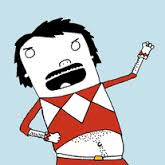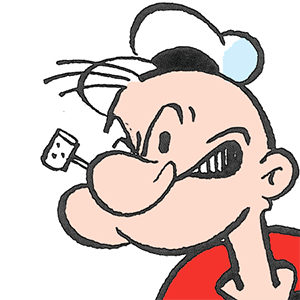Patrick Reusse: Love him or hate him, Pete Rose deserves to be ranked among the greatest ever
Published in Baseball
MINNEAPOLIS — Pete Rose had left the hometown Cincinnati Reds to sign with the Philadelphia Phillies as a free agent before the 1979 season. For a regional sports audience, this was not an event to be confused with, say, the Timberwolves trading Karl-Anthony Towns.
This was trauma.
“It was like the world had ended around here,” said Hal McCoy, a Hall of Fame honoree as a long-time Reds beat writer for the Dayton Daily News. “Pete was the hometown kid who had been the spark plug of the Big Red Machine. People could not believe this was happening.”
Rose had played with the Reds for 16 seasons and was turning 38. The four-year contract called for $3.225 million and Rose said, famously:
“That’s so much money that a show horse couldn’t jump over it.”
Those making occasional visits to Cooperstown, N.Y., on Hall of Fame weekends in recent decades and saw Pete tucked away next to a building on the main street, signing anything put in front of him for a price, can speculate that the taxable $3.225 million didn’t go nearly as far as Rose initially speculated.
Rose was in Cooperstown again late in July, signing, but not smiling. Turned out, his health was waning. He was found dead at age 83 on Sunday at his home in Las Vegas.
Anyone choosing to do so can offer snide remarks on what Pete would become after being banned from organized baseball for gambling on Reds games in August 1989. What cannot be argued is that any ballplayer created the same maximum out of minimal physical gifts as did Rose.
“He was playing amateur ball in Dayton in the spring of 1960,” McCoy said. “He was relatively slow, had a weak arm and the swing was pretty ugly. But his uncle, Buddy Bloebaum, was a ‘bird dog’ scout for the Reds, and they signed Pete as a favor to Buddy.”
By 1963, Rose was playing second base for the Reds. By 1965, at Met Stadium in Bloomington, he was playing second base for the National League in the All-Star Game as part of perhaps the greatest team ever assembled in baseball.
Rose would play in 17 All-Star Games at five positions: second and third base, right and left field, and late in his career, at first base. “When the Big Red Machine added Joe Morgan, he left second and moved to left field,” McCoy said, “Later, [manager] Sparky Anderson told Pete they had to get George Foster in left field, so he moved to third without ever having played there.
“Pete didn’t care, as long as he got his at-bats.”
McCoy paused a second and said: “He lived for hits.”
Rose had returned to the Reds (from Montreal) in August 1984, to be both manager and player. Remember, no designated hitter in the NL, so he put himself at first base to get the at-bats he coveted.
Rose was 44 and Tony Perez still was there at 43, playing part time, also a first baseman. Rose would have 501 plate appearances in 1985 as he pursued Ty Cobb’s all-time hits record. Perez settled for 207.
On Sept. 9 at Wrigley Field, Rose singled in the fifth inning to tie Cobb’s all-time record of 4,191 hits. Amazingly, he stayed in for two more at-bats, grounding out and then striking out against Cubs closer Lee Smith.
The Reds were heading back to Cincinnati for a 10-game homestand. I was in the collection of sports writers flocking to Cincy to wait for the Cobb-beater.
And that’s when it was discovered all reports of Rose’s memory of events and genius with numbers was not exaggerated — that he could weave in stories endlessly and never repeat himself.
During Pete’s 45-minute session before the game: “When I came over to Cincinnati last August, I hit .365 the last 6 1/2 weeks. After that, I knew I deserved a chance to play again this season.”
During the 45-minute postgame session after he went 0 for 4, he was asked if he had considered calling former manager Anderson for “advice,” and Pete said instantly: “Sparky batted .220 as a career minor leaguer. If I start calling Sparky for advice on hitting, you guys are going to be waiting for me to get this hit for a long time.”
The record-breaking hit came on Sept. 11, 1985, and Pete stuck around as a less-used player/manager in ‘86 to push his hits total to a never-to-be-challenged 4,256.
Minnesota’s greatest hitter, Rod Carew, discovered Rose’s mastery of hits and history in the 1978 All-Star Game in San Diego. Carew led off the game with a triple and followed with a second in the third inning. “Pete was playing third and as I was sliding in, he said, ‘You did it, Rod.’ Did what? And Pete said, ‘You’re the first player with two triples in an All-Star Game.’
“Pete was right.”
©2024 The Minnesota Star Tribune. Visit at startribune.com. Distributed by Tribune Content Agency, LLC.







Comments